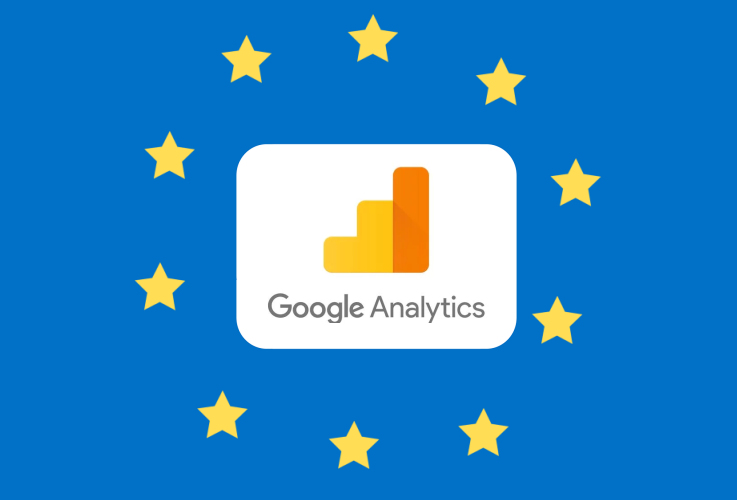When you own or manage a website it is imperative to be able to understand where your visitors are coming from and what pages on your site they arrive at so that you can identify areas of your marketing or visitor retention efforts that are failing to deliver. That's why if you are not using Google Analytics, then you should be. With Google Analytics you can find out how your website acquires visitors and therefore if you need to be investing more into Search Engine Optimization, for example.
![]()
In the "Acquisition > All Traffic" section of your Google Analytics reports you will notice that all visitors have a "Source" value. This represents the place last visited before reaching your page, and can include a search engine or another page on your website. You will notice that a number of your website visitors have a "Source" value of "(direct)", which means that these visitors have arrived at your website by directly entering your website's URL in their browser (without following a link to your site from another website or page of your website).
But often these visitors have followed links to your website - it's just that Google can't track them because they are not links from within the browser. Along with a "Source" value, your visitors also have a "Medium" value, which represents the method your website visitors used to arrive at your page. Values can include "organic" (search results),"cpc" (paid search results) and "none" (where the Source is "(direct)"). Here are some examples of Source/Medium value pairs:
- google / organic
- (direct) / (none)
- google / cpc
- facebook.com / referral
- twitter.com / referral
The Untracked Referrals
If your website offers an email newsletter, and you don't use high-end email-sending software to track your readership, you may find that on days that you send your newsletter your website traffic increases, and so does your "(direct) / (none)" traffic. You can probably deduce that this traffic results from your newsletter, but when viewed as part of a month's statistics, this fact will be lost. Likewise, and as we've discussed in a previous article, it's not possible to track the reading of RSS feeds using Google Analytics, so anyone clicking a link in an RSS feed will be treated as "(direct) / (none)" traffic. There is a way to solve both of these problems.
Using Custom Campaigns in Google Analytics
In the same way that linking your Google Ads and Google Analytics accounts lets you track what your Google Ads visitors do on your website, Google Analytics allows you to create "custom campaigns" that let you track visitors that originate from campaigns other than Google Ads, or if you don't want to use "Auto-Tagging" in your Google Ads settings. You can also create custom campaigns to let you track your email and RSS feed traffic. In simple terms, this enables you to create new Source/Medium value pairs to classify your website traffic.
To create a custom campaign, all you need to do is create custom URLs for the links to your website in your emails and RSS feeds by adding Google's custom campaign parameters to your links. You can do this manually or by using using Google's Custom URL Builder. For an email newsletter, your custom URLs can include the following values:
- Campaign Source (utm_source): For paid advertising, this would be the name of the advertising program (e.g. Google). For email marketing, you should give this parameter a value that reflects the type of email marketing, for example "newsletter" or "promotion".
- Campaign Medium (utm_medium): For paid advertising, this would be "cpc" (Cost per Click),but for email marketing purposes this value should always be "email". Likewise, for customizing links in RSS feeds, this value would be "rss".
- Campaign Content (utm_content) (optional): For paid advertising, this would be used to differentiate ad locations, for example the location of an advert on a page. For email marketing, you could use this to differentiate the links in your email newsletter. For example, if your newsletter has a logo at the top, this value could be "logo" and links from your editorial section might be called "editorial". This would allow you to differentiate how effective each link in your email newsletter is.
- Campaign Name (utm_campaign): For paid advertising, this would be used to label the campaign, and would be called something like "Christmas Offer". When tracking email newsletter traffic, it would be a good idea to name this after the date of the email. This would allow you to see which email newsletters have been more effective in generating traffic.
Note that special characters in custom campaign URLs need to be escaped (e.g. ampersands need to be represented as &). Here are some examples of custom campaign URLs:
- ?utm_source=newsletter&utm_medium=email&utm_campaign=2013-12-03&utm_content=logo
- ?utm_source=newsletter&utm_medium=email&utm_campaign=2013-12-10&utm_content=editorial
- ?utm_source=promotion&utm_medium=email&utm_campaign=2013-12-03
- ?utm_source=news&utm_medium=rss&utm_campaign=news
When you use custom campaign URLs in your email marketing efforts and RSS feeds, you will begin to notice new Source / Medium value pairs in your Google Analytics reports. The above examples will result in the following value pairs:
- newsletter / email
- rss / rss
Google Analytics Channels & Custom Campaigns
In the "Acquisition > Channels" section of your Google Analytics reports, traffic from different custom campaigns will appear differently. There are default channel definitions that you can not change, including Direct, Organic Search, Referral, Email, Paid Search, (Other),Social and Display. This means that if you create custom campaign URLs using a "Medium" of "Email", visitors to your site using these links will be included in the existing "Email" channel. Clicking on the channel will display the "Landing Page" that the visitor arrived at. However, if you create a custom campaign URL that includes a "Medium" value that does not belong to a default channel (for example "RSS"),visitors to your site using these links will be included in the "(Other)" channel. Clicking on this channel will reveal the "Source" value from your custom campaign URLs.
Using Custom Campaign Data
If you are now in a position to track which of your website visitors are arriving at your site via links in your email marketing efforts or RSS feeds, in some cases you may be surprised how few people are following links in your email marketing. The good news is that you can now monitor the effectiveness of your email marketing, by comparing the number of visitors you acquire from email newsletters with varying email subjects and content. Armed with this information, you can tailor your email newsletters to appeal to more of your subscribers.


